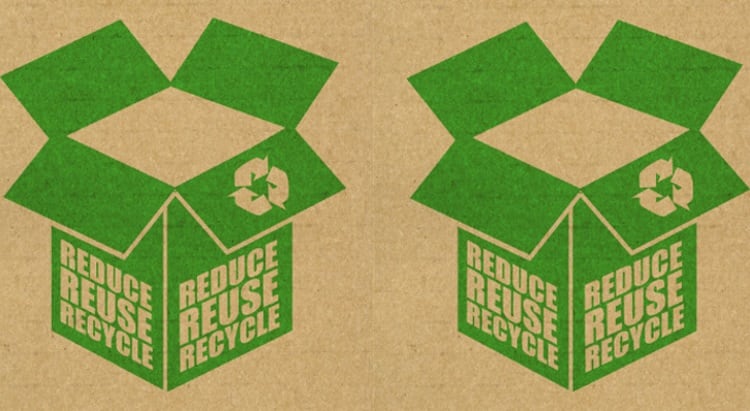The world is rallying against the glut of plastic polluting our oceans and waterways, with regulations in the EU and UK placing the onus on the producer to increase recycling rates and recycled content, while reducing single-use plastics and creating less waste.
The slogan ‘reduce, reuse, recycle’ built its mantra in the late 70s, purportedly at the time the US Congress passed the Resource Conservation and Recovery Act to increase recycling and conservation efforts as waste became a bigger problem.
Sustainability is an issue for many consumers, with nearly 80% stating they are willing to pay more for sustainable packaging, in order to leave a positive legacy for future generations.
As the desire to make a difference grows, brands need to evolve their packaging and even their marketing strategies to keep up with rising consumer sentiment.
The pros and cons of green packaging
1. Make it refillable
‘Use again’ is a concept modern consumers are embracing, evident in the number of retailers making the switch to more sustainable alternatives.
Such as Fortnum & Mason, which is rolling out a system that will allow customers to order refills of biscuits. The deluxe retailer has already introduced £85 reusable Christmas wicker hamper, offering a £5 gift cards to customers who return the basket. The food emporium also plans to introduce chlorine-free, water-based ink paper bags, made from 20% recycled materials, which it said will remove more than 70 tonnes of single-use plastic from its business.
In a similar vein, Asda has introduced its first refill store in Scotland, where consumers can fill up on an extensive range of branded and own-brand products in loose format as part of its drive to reduce plastic. The supermarket has partnered with a host of the UK’s most popular household brands – like Kellogg’s Coco Pops, Rice Krispies and Cornflakes, as well as Nestle’s Shredded Wheat Bitesize and Quaker Original Oats – to introduce the unpackaged goods within specific aisles of its Toryglen store in Glasgow.
2. Design for recycling
In order to be recycled, post-consumer packaging has to fulfil a long list of requirements, from separability to cleanliness, labelling and colouration. Unfortunately, though, to meet these requirements, manufacturers may have to use more material and energy.
So, keep in mind the recycling infrastructure when designing your packaging. Regulators should match recycling quotas – for example, the EU recycling rate of 75% of packaging waste by 2030 – to regional capacities and plan the expansion of the recycling streams in coordination with those quotas.
Designing for recycling is becoming more imperative in order to future-proof the business, but we first need to ensure recyclability equals recycling, preferably in a closed-loop system.
3. Reduce and remove
Reducing, and ultimately removing, packaging is a win:win situation for both people and the planet, however, we must not lose sight of the purpose of packaging when assessing its environment impact. If the packaging fails to fulfil its primary purpose of safeguarding the product’s quality, the product may spoil, be damaged and go to waste – and the environmental impact will be far higher than just packaging.
But persevere, and remember you might need to adopt a new mindset to work within the limits of the reduced packaging – such as a shorter product shelf-life. Tell your consumer what you are doing and why. They will soon be on the same page, realising the net benefits outweigh the drawbacks.
4. Replacing materials
A trend on the rise is the increased use of alternative materials, like bioplastics to replace fossil fuel-based plastics, and mono-material packaging to overcome the recyclability challenges of multiple materials.
Don’t, however, believe this will is the ultimate answer, as in some casing, using alternative materials might only shift the environment burden to another area. An ingested bioplastic bag may still choke whales and other marine life. Using paper may reduce the carbon footprint, but could increase impacts such as acidification and eutrophication. Replacing plastic with paper could also result in a supply problem: meaning greater deforestation. Mono-material solutions are also decidedly heavier and bulkier than their composite alternatives and may need other additives.
So, use eco-design, keep in mind the product’s end-of-life and be aware of the risk of burden-shifting – both systemically and holistically.
5. Out-of-the-box thinking
The UK has set a target of at least 30% recycled content by 2030, but there’s a lot of challenges that come with that aim.
Firstly, recycled content affects the quality of the packaging and might require an extra layer of protection, meaning extra weight. Secondly, the recycling of plastics is currently limited to about five cycles before the recyclates lose the necessary material properties. Thirdly, recycling carries its own environmental burdens because of the energy and materials required.
But don’t let these challenges stop you. Think out-of-the-box to upgrade your packaging, such as transforming packaging custom boxes into an augmented experience, AI or digital game. Some of these include 3D rendering of packaging artwork and interactive tours, allowing customers to interact with packaging in unique ways.
Don’t be afraid to make alliances with supplier as well as the competition, and innovate, innovate, innovate.
Yes, you’ll need to have courage and investment to take the leap, but remember: innovation is hard, but all the more rewarding.
6. Keep an eye on trends
Packaging is an essential component of your customer’s journey and experience with your brand, so it is important to be an early adapter to the emerging trends.
Partner with a provider to update your packaging solutions, which has proven industry experience, preferably inhouse packaging design capabilities, and a huge range of packaging products.
Another way to keep tabs is to invest in packaging that collect feedback from your customers through the use of QR innovation.
7. Shout out your sustainability message
Get your customers on board with your chosen strategy: focus on the function of the packaging and how it has been changed to benefit diverse environmental impacts.
Brands that communicate and educate their fans on how to responsibly use and dispose of packaging have already taken a step in the right direction. By incorporating interactive online experiences through QR codes, say, businesses will be able to easily provide content and information to their customers. Furthermore, QR codes are sustainable, being more lightweight and cheaper than manuals and instructional guides.
Personalisation is also key. Today, 98% of marketers agree it helps advance customer relationships, while 70% say it has a strong impact on delivering better customer experiences and increasing their loyalty. Think of digital printing, for example, which makes custom packaging possible.





